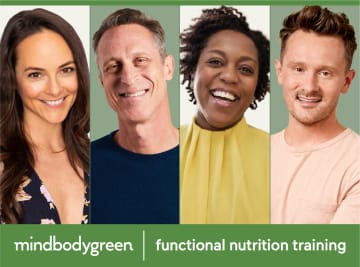Vitamin D is a hormone-like micronutrient produced from a photolytic reaction with ultraviolet (UV) light—which can be hard to come for those of us who spend a lot of time indoors. Even for those who do have access to lots of sun, many folks spend the majority of time indoors or slather on UV-blocking sunscreen when they do go out. As you get older, your body also naturally slows down its production of natural vitamin D (skin photosynthesis becomes much less efficient). The average 70-year-old creates significantly less vitamin D3 than a younger person. Skin color makes a difference, too, as people with darker skin (i.e., more melanin) produce less vitamin D. All things considered, you probably need to look beyond the sun to get enough vitamin D, especially if you’re older. Unless you’re eating 30 ounces of wild salmon a day (i.e., 7 plus servings of fish) or downing 5 plus tablespoons of cod liver oil with breakfast, you might need to start taking a supplement to make sure you’re getting optimal levels.* I put nearly every one of my clients on vitamin D supplements, which are inexpensive and easy to take via softgels or liquid drops.* But the real question is: How much vitamin D do you need for optimal health? Probably more than you think—but thankfully, here’s what you can do about it: To improve absorption, take vitamin D with food that contains some fat since it is a fat-soluble nutrient.* For maintenance beyond 3 months, 5,000 IU a day of vitamin D3 is useful for most.* Some people may need higher doses, but please discuss this with your provider.* There are different “optimal ranges.” Experts and organizations have different ranges. You want your 25(OH)D levels well over 30 ng/ml. This is the cutoff for clinical insufficiency. Rechecking your levels after three months (and periodically beyond that) is the clinical consensus. The goal is to keep your vitamin D levels sufficient and steady for life.* As I mentioned earlier, please talk to your doctor about making any changes to your normal health routine, as every body has different needs.



